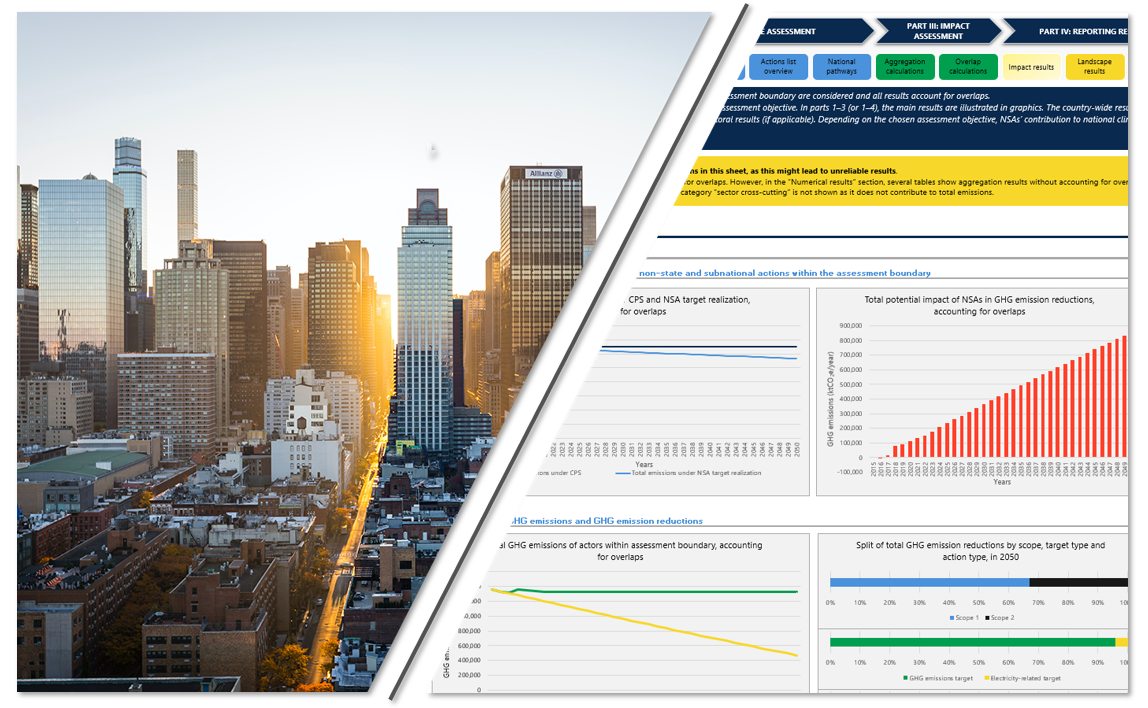
The ICAT Climate Action Aggregation Tool (CAAT) guides users in a step-by-step process to define a research scope, compile non-state and subnational actor data for bookkeeping, and perform analyses at various levels of complexity in a user-friendly, macro-enabled Excel file.
All calculations, analytical components, and peer-reviewed methodologies are fully integrated to produce actionable results in an array of summary statistics, tables and graphs tailored to users’ selected assessment objectives and defined scope. Built-in user functions such as data validation checks, buttons, and info boxes are embedded throughout the tool to equip users in their assessments without extensive prior experience. The tool is further supplemented with a user introduction presentation, methodology note, data collection template, and video training.
The CAAT can deliver results for the following primary use cases:
- Landscape analysis describing the number of actions, action and actor types, temporal ranges, and emissions covered by NSAs. Users can use this information to get an overarching perspective on the breadth of actors pursuing climate action, assess the nature and ambition levels of sectors and actor groups, and identify frontrunners and laggards in climate action.
- Impact and overlap analysis aggregating annual potential emission reduction impacts from NSAs for any year between 2015 and 2050. The tool helps users determine a reference GHG emissions scenario and a scenario under target realization for each action, and to calculate potential impact in terms of GHG emission reductions. Further, it includes built-in functions and methodologies for the analysis of overlaps between NSAs from different actor groups to depict the actual potential emission reduction impact more accurately. Users can use this information to assess the magnitude and significance of NSAs and their possible impact on carbon budgets.
- Comparison of NDC or other policy scenarios with integrated projected emission reductions from NSAs. Users can input up to five defined national emission pathways from various policy scenarios (e.g., business-as-usual, current policies, or NDC) in the tool to further assess the extent to which NSAs can contribute to achieving—or exceeding—regional and national climate targets. The results can be used to determine the need for additional climate action or the ratcheting up of targets.
The tool was developed by NewClimate Institute with support from World Resources Institute under the Initiative for Climate Transparency (ICAT).







